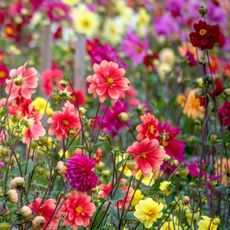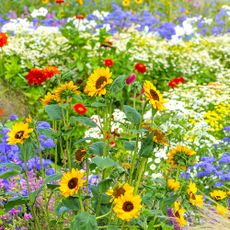Learn About Chelsea Watermelon History

While you may be well versed in growing, or eating, watermelons, there's a few heirlooms out there that you may not have ever heard of. One of these delightful fruits goes by the name of Chelsea. These melons are intensely sweet, pink-fleshed watermelons with white seeds (yes, white rather than the traditional black most of us are accustomed to) and a just-right harvest weight of 15 to 20 pounds.
Chelsea Watermelon History
Watermelons (Citrullus lanatus) originated in the Kalahari Desert of southern Africa, where the juicy melons were appreciated not for their sweet flavor, but for the bounty of fresh water they provided in that dry, parched land. Seems a bit strange growing watermelons in the desert, but when you think about the reasons they did, I guess it does make sense. Early travelers transported watermelon seeds to the Middle East and Europe, and by the early seventeenth century, the sweet fruit was growing in the warmth of the southern United States. Three hundred years later, the particular species known as the Chelsea watermelon plants were well-established in the small town of Chelsea, Iowa where farmers sold them sight from their wagons. Chelsea is well known for its delicious melons, which thrive in the area's sandy soil and perfect melon-growing climate - warm summer days and cool nights. Although modern cultivars have taken its place, a few of Chelsea's gardeners may still grow this heirloom variety. You won't find this heirloom melon at most garden centers, but an online search reveals several sources for Chelsea watermelon seeds and other heirloom plants. Once you find them, you won't be sorry either.
Growing Chelsea Watermelon
Chelsea watermelons are relatively easy to grow in climates with a long growing season of sunny summer days between 65 and 95 F. or 18 to 35 C. Trust me, you won't have much luck growing heat-loving watermelons if you live in a cool climate with a short growing season, or where nighttime temperatures fall below 65 F. Watermelon plants perform best in rich, well-drained soil amended generously with compost, manure or other organic matter, along with an all-purpose fertilizer. A soil pH between 6.5 and 7.5 is ideal. The plants may develop stunted growth and yellowed foliage in acidic soil with a pH below 6.5. Planting Chelsea watermelon seeds indoors provides a jump start, which is critical in climates with short growing seasons should you decide to go this way. The time for indoor seed starting is two to four weeks before the expected last frost of the season in your particular area. I have found that peat pots work well for starting seeds because the seedlings can be planted along with the pots, which prevents damage to the fragile roots during transplantation outdoors once you're sure the ground is warm and there is absolutely no chance of frost. If temperatures are still a little on the chilly side, you can provide extra warmth for the fragile seedlings by covering the ground with black plastic. Punch holes in the plastic and plant the seedlings through the holes, then leave the plastic in place throughout the growing season to warm the soil, conserve moisture and keep weeds in check. Watermelons need deep watering once or twice a week until the melons are baseball size. Decrease water gradually as the fruits ripen to produce a sweeter flavor. Don't overwater during the final couple of weeks, as too much water may cause the ripening melons to split. Provide supplemental nitrogen fertilizer, according to label recommendations, after runners extend from the vines. And that's all there is to it. Soon you'll be enjoying this interesting watermelon variety and may even be curious about trying other heirlooms too!
Gardening tips, videos, info and more delivered right to your inbox!
Sign up for the Gardening Know How newsletter today and receive a free copy of our e-book "How to Grow Delicious Tomatoes".

A Credentialed Garden Writer, Mary H. Dyer was with Gardening Know How in the very beginning, publishing articles as early as 2007.
-
 Cut Flower Garden For Beginners: 8 Easy Decorative Floral Plants For Newbies To Grow
Cut Flower Garden For Beginners: 8 Easy Decorative Floral Plants For Newbies To GrowAre you new to growing decorative florals for bouquets and ornamental displays? A cut flower garden for beginners is well within reach if you grow these flower seeds
By Tonya Barnett
-
 10 Flower Seeds To Sow In April For Endless Blooms Through Summer & Fall
10 Flower Seeds To Sow In April For Endless Blooms Through Summer & FallDiscover the best annual and perennial flowers to plant in April to ensure a sea of color in borders and containers that lasts all summer and into fall.
By Bonnie L. Grant